- This event has passed.
TYC Recently Appointed Academic Talks: James P. Ewen – Imperial, Michelle Sahai – Brunel & Curt von Keyserlingk – King’s
28 November 2024 @ 2:00 pm – 4:00 pm

James P. Ewen – Imperial College London
From silicon to silicone alternatives: towards virtual screening of hair care ingredients
Shampoos and conditioners form part of many people’s daily routine. These complex formulated products aim to cleanse and repair the hair surface to maintain a satisfactory look and feel. Huge volumes of these products are sold every year and the global hair care market is valued at close to $100B. There is currently a industry-wide drive to improve the environmental credentials (e.g. biodegradability, biocompatibility, and sustainability) of hair care products, without compromising their performance. Molecular simulations are seen as an important tool with which to reduce the cost and increase the speed of R&D towards more eco-friendly products compared to laboratory-based methods and panel testing. In this talk, I will present a coarse-grained molecular dynamics framework to study adsorption, wettability [1], and friction [2] of hair care ingredients on biomimetic hair surfaces. I will present results for simple surfactants [3], polymers, and polymer-surfactant complexes [4]. Ongoing work to generalise the methodology to enable virtual screening of the performance of potential new hair care ingredients and formulations will also be discussed.
[1] Weiand et al., Soft Matter, 2022, 18, 1779 (https://doi.org/10.1039/d1sm01720a)
[2] Weiand et al., Nanoscale, 2023, 15, 7086 (https://doi.org/10.1039/d2nr05545g)
[3] Weiand et al., PCCP, 2023, 25, 21916 (https://doi.org/10.1039/D3CP02546B)
[4] Weiand et al., Langmuir, 2024, 40, 7933-7946 (https://doi.org/10.1021/acs.langmuir.3c03737)
Curt von Keyserlingk – King’s College London
Entanglement and the classification and simulation of many-body systems
In recent years we’ve expanded our understanding of entanglement in many-body quantum systems; both how it behaves in ground states, and how it grows out-of-equilibrium. Entanglement is very difficult to measure in experiments. But through understanding it better, we’ve made great progress in classifying quantum phases of matter, and in developing algorithms for efficiently simulating quantum systems. I will review some recent progress in these directions.
Michelle Sahai – Brunel University of London
Elucidating the Molecular Mechanism of Action of Stimulant New Psychoactive Substances (NPS) that target the High-affinity Transporter for Dopamine
Drug misuse is a significant social and public health problem worldwide. Misused substances exert their neurobehavioural effects through changing neural signalling within the brain, many of them leading to substance dependence and addiction in the longer term. Among drugs with addictive liability, there are illicit classical stimulants such as cocaine and amphetamine, and their more recently available counterparts known as novel psychoactive substances (NPS). Stimulants normally increase dopamine availability in the brain, including the pathway implicated in reward-related behaviour. This pattern is observed in both animal and human brain. The main biological target of stimulants, both classical and NPS, is the dopamine transporter (DAT) implicated in the dopamine-enhancing effects of these drugs. To achieve a greater understanding of the core phenomena that decide about the addictive potential of stimulant NPS, studying the molecular mechanisms underpinning the interactions between stimulant NPS, such as benzofurans, cathinones or piperidine derivatives and DAT is critical. Towards this goal, we are currently taking advantage of powerful computational chemistry approaches such as molecular modelling and simulation in combination with standard neurobiological techniques such as autoradiography and voltammetry. The structural and pharmacological evidence of stimulant mechanism of action of different classes of NPS at DAT will be presented; evidence that suggests the potential addictive properties and informs about the health risk related to its use. Research of this kind is of interest to not only scientists but also health professionals as updated knowledge of NPS, their modes of action and health risks, is needed to tackle the challenges posed by NPS misuse. Currently applied to assess the addictive potential of NPS, this work provides further opportunities to understand the mechanisms of other physiologically important proteins, including the serotonin (SERT) and norepinephrine (NET) transporters. This work also highlights other targets of synthetic compounds like the serotonin, cannabinoid and opioid GPCRs; the mechanism of the later should be urgently addressed considering the recent spate of opioid abuse.
Sahai, M. A. & Opacka-Juffry, J. Molecular mechanisms of action of stimulant novel psychoactive substances that target the high-affinity transporter for dopamine. Neuronal Signal. 5, 20210006 (2021).
Loi, B., Sahai, M. A., De Luca, M. A., Shiref, H. & Opacka-Juffry, J. The Role of Dopamine in the Stimulant Characteristics of Novel Psychoactive Substances (NPS) -Neurobiological and Computational Assessment Using the Case of Desoxypipradrol (2-DPMP). Front. Pharmacol. 11, 1 (2020).
Sahai, M. A., Davidson, C., Dutta, N. & Opacka-Juffry, J. Mechanistic insights into the stimulant properties of novel psychoactive substances (NPS) and their discrimination by the dopamine transporter – in silico and in vitro exploration of dissociative diarylethylamines. Brain Sci. 8, 63 (2018).
Sahai, M. A., Davidson, C., Khelashvili G., Barrese, V., Dutta, D., Weinstein, H. & Opacka-Juffry, J.Combined in vitro and in silico approaches to the assessment of stimulant properties of novel psychoactive substances – The case of the benzofuran 5-MAPB. Prog. Neuro-Psychopharmacology Biol. Psychiatry 75, 1–9 (2017).
Organised by:
Johannes Lischner
j.lischner@imperial.ac.uk
